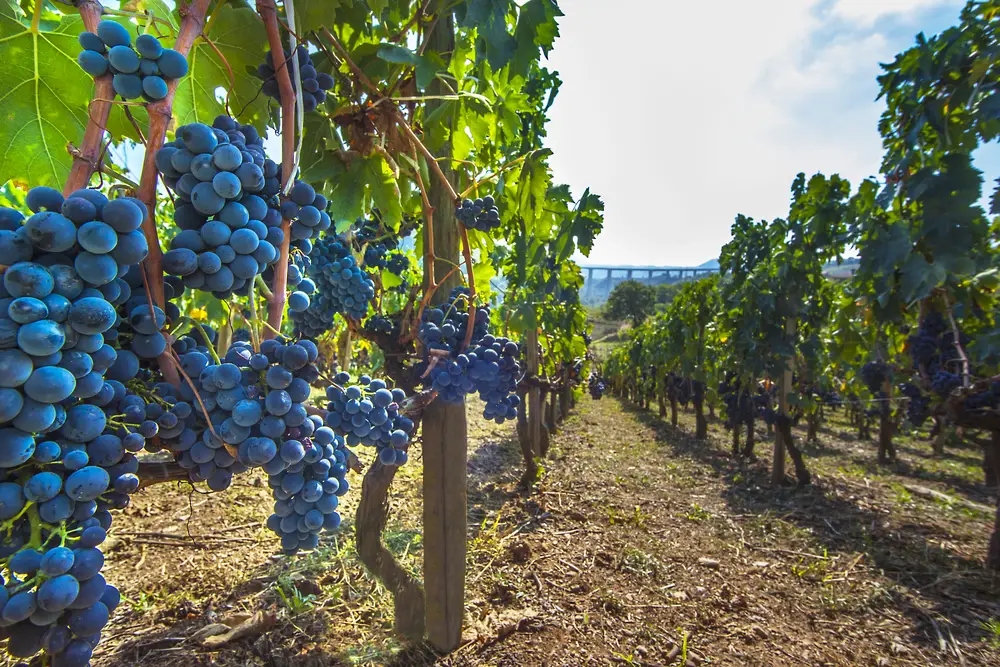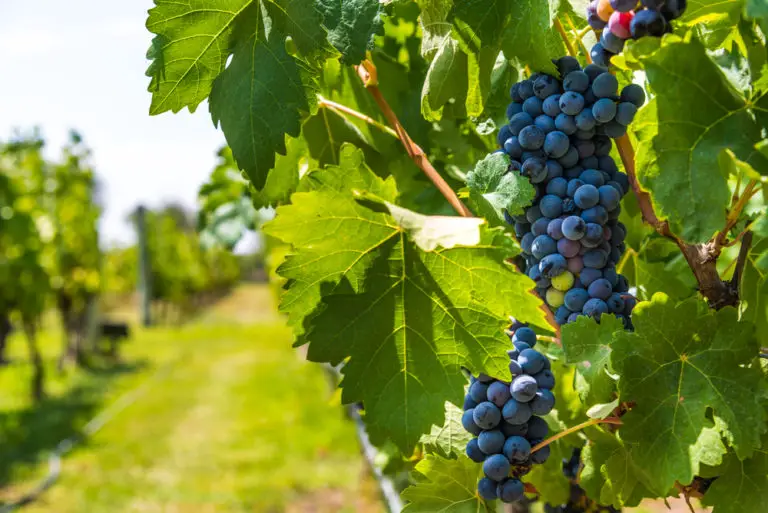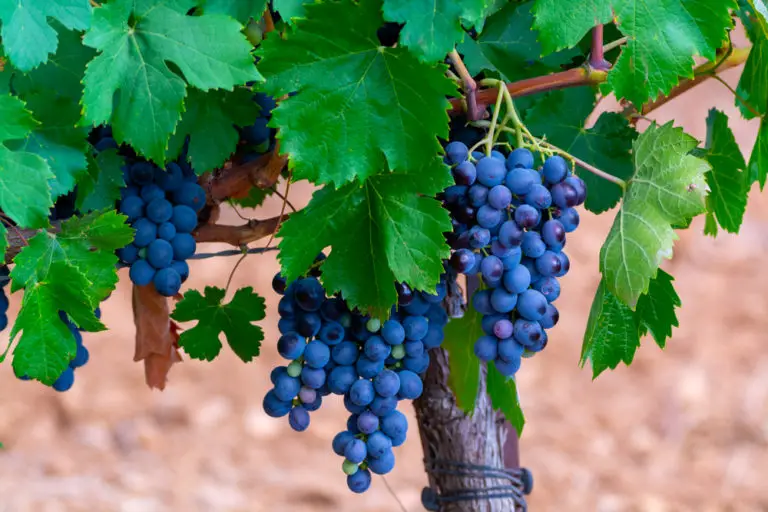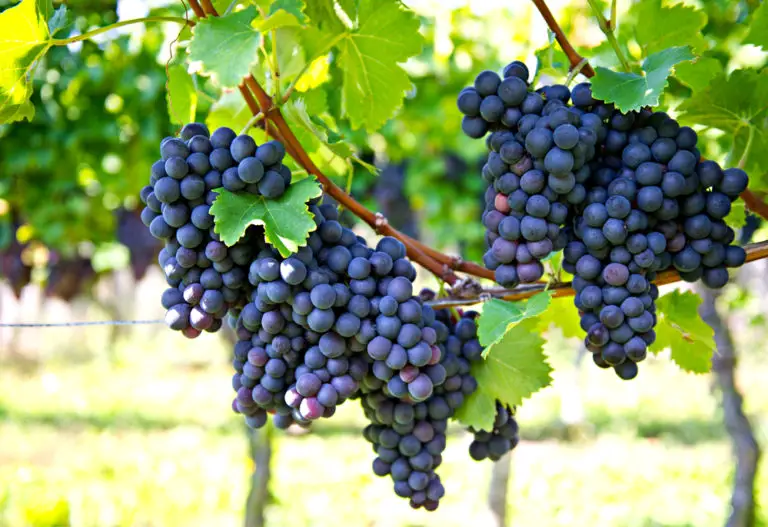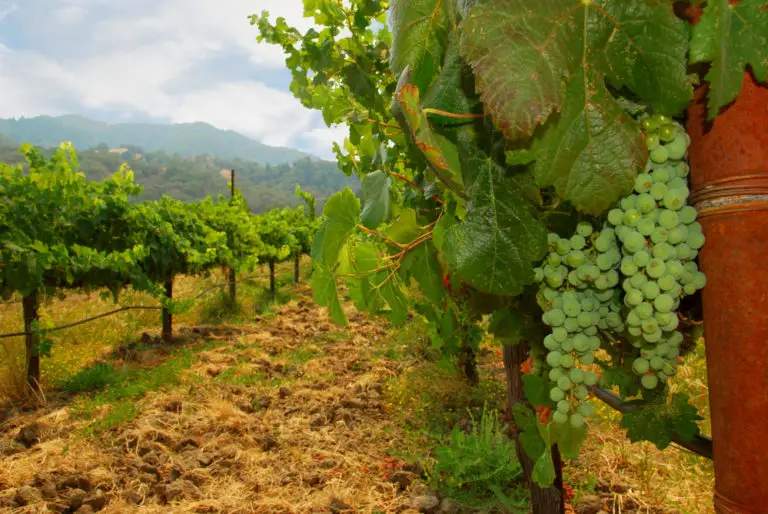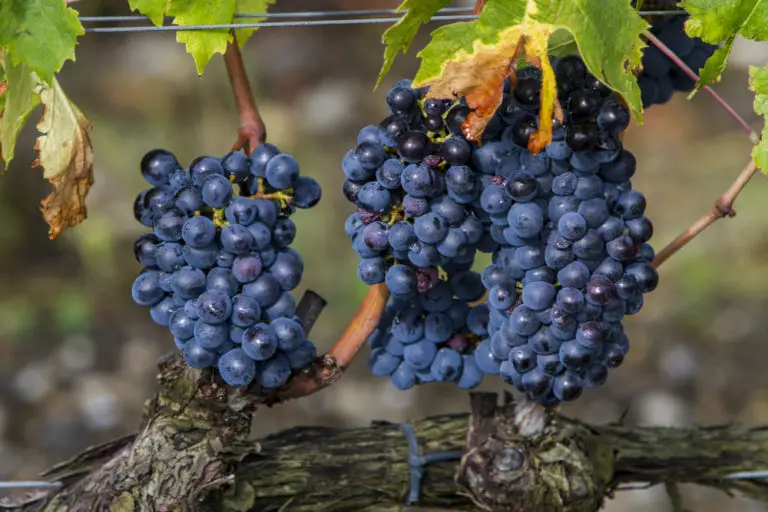Aglianico: The Beginners Guide (2024)
Aglianico is a grape variety that is particularly widespread in southern Italy and originally comes from Greece. It is considered one of the best grape varieties in Southern Italy and is slowly gaining popularity outside of its homeland. Because of their high tannin content, the wines often need a few years of ripening to fully develop their quality.
- What is Aglianico?
- Known Regions for Aglianico
- Popular Blends of Aglianico
- How to Enjoy Aglianico?
- How is Aglianico Made?
- History of Aglianico
- Alternatives for Aglianico
What is Aglianico?
Aglianico is a red wine variety that is one of the oldest autochthonous grape varieties in Italy. Its occurrence is mainly limited to the south of Italy, especially Campania and Basilicata, where it can thrive in optimal conditions thanks to the dry climate and the numerous hours of sunshine.
It is one of the late-ripening grape varieties, and the harvest phase often extends into November. Their relatively thick skin is rich in tannins and color pigments. Aglianico pronunciation is ah-L’YEE’AH-nee-koh.
The Aglianico del Vulture is deeply colored and often has such an abundance of tannins that it appears aloof in its youth and needs several years of aging and maturity to round off. Thanks to its medium Aglianico alcohol content (around 12-12.5% vol.), It does not appear top-heavy, but rather velvety, with a differentiated character that sets it well above the average of southern Italian red wines.
Aglianico vs. Barbera vs. Bottaro
Barbera is the third most important grape variety in Italy in the red wine sector. The smell of the wine is characterized by a stone fruit aroma. Its taste is valued because it has little tannin and invigorating acidity.
These wines have high storage potential. The wines are powerful and have a low tannin content. Despite their low tannins, they never appear monotonous or shallow, as they are supported by extremely strong acidity.
Bottaro is a red table wine that comes in a unique retro-style straw bottle. It has a twisted long neck with a cork. It is a dry wine that looks deep purple in the glass.
This Red Table Wine has 12% alcohol by volume. It had a one-dimensional aroma and an earthy flavor making it a blunt wine. Whereas, Aglianico has multiple flavors and aromas, which makes the wine interesting.
Aglianico Characteristics
The Aglianico wine color is red which is made from the berries of the Aglianico and is full-bodied, full-bodied, and spicy. Ripened drops give off a bouquet of plums, chocolate, and dark berries such as blackcurrants, morello cherries, and cranberries. In the glass, the wine is ruby red to deep dark purple.
On the palate, you can feel the strong tannins, a unique taste Aglianico profile with a long, intense finish. In most cases, the aroma of wines from the Aglianico varietal only develops after a long period of storage. It leaves strong tannin impressions and accents on the palate that impress wine connoisseurs.
Aglianico characteristics are therefore particularly popular with wine lovers who are looking for something special. It is considered one of the best grape varieties in southern Italy and is slowly gaining popularity outside of its homeland. Because of their high tannin content, the wines often need a few years of ripening to fully develop their quality.
Aglianico Taste Profile
While Aglianico can help a blend to have a robust structure and a certain depth, it is characterized by its pure body and richness of aromas, but often also by a certain severity in its youth. If harvested too early, astringency and acidity can become too apparent, which is why fully ripe grapes are essential for a high-quality Aglianico wine.
According to the regulations of origin, such a DOC Aglianico del Vulture wine must be 100% single-variety, while both DOCG Taurasi and DOC Aglianico del Taburno allow shares of up to 15% of other regional grape varieties. They have typical aromas of tannin, ripe dark cherries, violets, chocolate, and tobacco.
The strong bouquet contains notes of ripe, dark berries, spices, and plums as well as subtle floral accents. In terms of taste, this red wine offers sweet nuances, a full body, and the characteristic fruit core. In the long finish, Aglianico tasting notes come into their own.
Aglianico Ageability
The wines from Taurasi and Aglianico del Vulture spend at least three years in wooden barrels or barriques after vinification before they are put on the market after a short period of bottle aging.
In this way, they develop their typical aromas of tannin, ripe dark cherries, violets, chocolate, and tobacco. A high-quality Aglianico wine offers considerable aging potential and can be stored for years without hesitation; this fact and his considerable depth of character put him on a par with the most elegant plants in northern Italy. It is not for nothing that the Aglianico del Vulture has earned the nickname “Barolo of the South”.
Known Regions for Aglianico
Aglianico red wine is typically grown on steep mountain sites or volcanic soils in Southern Italy. It is also grown in Australia, New Mexico, and Texas.
Since Aglianico has excellent resistance and unique physical properties, it might be the right grape to cultivate it in certain extreme conditions where other grape cultivation seems to be difficult. Let us take a look at these Aglianico regions in detail:
Taurasi, Campania
The grapes from here are the smallest and least vigorous types of Aglianico grape. They are cylindrical-conical in shape. It is said that Hellenic peoples around the time of the foundation of Cumae introduced these grapes to the Taurasi DOC.
Vulture, Bascilicata
The wines produced in this region are Aglianico del Vulture and Aglianico del Vulture Superiore which are based on Aglianico grapes. It is located on volcanic soils derived from nearby Mount Vulture. In 1971, it was awarded DOC (Denominazione di Origine Controllata).
Most Aglianico vineyards located here are in higher altitude regions, and the grapes from this location are the fruitiest. When the yield is kept low, the wine produced will have an intense Aglianico flavor.
Taburno, Campania
Taburno DOC is located in the Apennines, in the Campania region of Southern Italy and to the west of Benevento. It is composed of two groups of calcareous mountains separated by a plain. The Taburno DOC is currently a subzone of the Sannio DOC label. The Aglianico grapes grown here are typically highest in acid and ripen soonest.
Popular Blends of Aglianico
You can find Aglianico as both 100% pure wine or as a blend. Some of the popular Aglianico blends are:
Di Majo Norante
This blend from Molise, Italy has 85% Montepulciano and 15% Aglianico ABV. This wine has a soft velvety palate and aromas of cherry and blackberry. It is full-bodied wine having notes of plum, spice, and licorice on the finish.
Pregio Del Conte
This wine from Le Marche, Italy is made with organic grapes. It is a blend of 50% Montepulciano and 50% Aglianico alcohol percentage. It has a balsamic fragrance and perfumes of sour black cherry along with notes of ginger, tobacco, and pepper. The velvety texture is well-integrated with tannins and has a long finish.
Roccamonfina Terra di Lavoro
Made by Galardi, this wine is a blend of 80% Aglianico alcohol and 20% Piedirosso. It is a full-bodied wine, having flowery, fruity, smokey, and vegetal nuances. This wine with a firm structure is extremely complex and dense on the palate. It has an Incredibly long and intense finale.
Barbera and Aglianico Red Blend
This wine is a blend of four varieties which includes 47% Barbera, 18% Aglianico, 17% Montepulciano, and 18% mixed Rhône varieties. It has no sulfites and is aromatic and fresh. People enjoy sipping it with pizzas or pasta.
Tendu California Red Blend
This blend consists of approximately 47% Aglianico, 42% Montepulciano, and 11% Barbera. It is a light, organic red wine having earthy red fruits, light tannins, and balanced acidity with a lingering finish.
How to Enjoy Aglianico?
Every wine comes with some serving suggestions that make them taste their best and brings out the aroma pleasantly. The same is the case with Aglianico, following are some suggestions that you can keep in mind while drinking Aglianico. It will make sure that Aglianico tastes its best.
Food Pairings
Aglianico makes the best pair with high-intensity food. Barbecue sauce goes along with Aglianico because of its high acidity. Also, this wine goes amazingly well with high-fat content to absorb the astringency. Let us take some Aglianico food pairing:
- Vegetable: You can eat Aglianico with roasted or grilled vegetables like Crispy Kale, Portobello Mushroom Steaks, Arugula, Roasted Mushrooms, Roasted Purple Cauliflower, Baked Beans, Purple Potatoes, Tempeh, Lentils, Black Beans and Black Eyed Peas.
- Cheese: Aglianico goes well with many kinds of cheese like Cheddar, Pecorino, Provolone, Asiago, Monterey Jack and Grana Padano.
- Meat: Serving it with meat is yet another option if you are planning to have it with dinner or at a party. It makes a great pair with Oxtail, Beef Brisket, Rabbit Stew, Smoked Pork, Chili, Soppressata, Beef stew, Barbecue Beef, Venison, Carne Asada, Seared Prime Rib and Buffalo Burgers.
- Spice/Herbs: You can use the following spices to cook your food that will pair with Aglianico well. Cumin, Garlic, Clove, White Pepper, Black Pepper, Allspice, Oregano, and Sage. You can also add Soy Sauce or Chinese Black Bean Sauce to it.
Temperature
Red wines, especially the more mature ones, are characterized by a high presence of tannins. It ensures longevity and body, as well as by a high astringency and low acidity.
The serving temperature aims to enhance the soft notes of the wine and to attenuate its tannins and possible bitterness. The right temperature will serve to make the characteristics of sweetness, alcoholicity, and softness well perceptible and to enhance the aromas of the wine to the maximum, allowing the complete opening of the bouquet.
The greater the structure and refinement of the red wine, the higher the serving temperature should be. Conversely, a very fruity young red wine with little structure is best appreciated at slightly lower temperatures. Aglianico should be ideally served at a temperature of 64.4º-68º F.
Stemware
There are various stemware available in the market in which you can enjoy drinking Aglianico wine. Some of these are:
- Rod wine glass: With a capacity of 65 cl, it is a set of 3 glasses made of titanium-reinforced crystal. A larger cup allows better oxygenation while retaining all the aromas. They elevate the aromas and Aglianico flavor profile, thanks to the perfect balance. They have an elegant stem to rotate between the fingers and a crystal edge.
- Riedel: The one is a red wine glass with a flat and elongated bottom to increase the exposed surface and increase evaporation which allows the aromas to intensify. Perfect for light red wines with high acid content.
- Spiegelau & Nachtmann: With a capacity of 70 cl, it is a set of 4 glasses made of crystal. One form is ideal for oxygenating the wine.
- Stolzle Lausitz: With a capacity of 796cl, it is a set of 6 glasses made of lead-free crystal. A design and modern shape, wider to allow an optimal diffusion of the bouquet, perfect swirling, the narrower upper part of the glass allows a precise tasting.
- Zalto: With a capacity of 70 cl, it is a set of 2 glasses made of lead-free crystal. It has an ideal shape for optimal oxygenation and a correct and practical tasting.
How is Aglianico Made?
Wine is obtained from the alcoholic fermentation of grape juice thanks to some yeasts present on the grape skin, capable of transforming the sugar of the pulp into ethyl alcohol and carbon dioxide. Clearly, according to the type of grape used and the vinification processes, it is possible to produce white, rosé, and red wines of different alcoholic grades. Let us take a look into Aglianico winemaking process:
1. Harvest
The first step of the wine production cycle is the harvest. In ancient times, it was made exclusively by hand, but today, due to the lack of manpower, it is performed mechanically, however, this type of harvest is less accurate than in the past since it does not allow you to select the bunches to be picked.
2. Crushing
After the grape harvest, we proceed with the pressing. Once, this operation was also performed without the aid of machines. The farmers crushed the bunches of grapes in the tubs with bare feet. The must thus obtained is purified of impurities and corrected with substances that regulate its acidity and the sugar component. Afterward, it is collected in large vats to ferment.
3. Fermentation
Fermentation is a biochemical process in which the sugar contained in the must gradually transform into alcohol and carbon dioxide. Aglianico is allowed to ferment by macerating together with the skins, seeds, and stalks.
4. Racking and Aging
It consists in decanting the wine, purified from the solid residues and the pomace that remain at the bottom of the vats, into the barrels, where a second fermentation and a further transformation of the residual sugar take place, all at a temperature of about 15 ° C. The wine is then allowed to age.
History of Aglianico
The origin of the Aglianico grape variety can be found in the Greek settlements in Asia Minor. The city of Phokaia was located on what is now the Turkish coast, where the grape variety was probably grown.
Aglianico came to Italy through Greek settlers who settled in Cumae. It is believed that they brought it to Italy around 2,500 years ago under the name Vitis Hellenica, Latin for “Greek wine”, where it spread quickly to the regions of Campania and Basilicata.
In Greece, however, the grape variety disappeared. Aglianico history was part of the first Italian top-quality wine in ancient Rome, the Falerner wine. Together with Greco di Tufo, Aglianico name was counted by Pliny the Elder among the grape varieties for the best wines of its time.
It thrives particularly well on volcanic soil. Even today, the largest growing areas can be found in Campania and Basilicata in southern Italy, where Aglianico is mainly grown in the area of the extinct volcano Monte Vulture (DOC wine Aglianico del Vulture).
Alternatives for Aglianico
Aglianico is an excellent introduction to the wine world as it has a savory taste. At the same time, it also has enough depth to keep sommeliers interested. You can try Cabernet Sauvignon, Merlot, or Sangiovese if you love Aglianico and want to try something with a similar taste. Let us have a look at these alternatives in detail:
Cabernet Sauvignon
Cabernet Sauvignon is a natural cross of Cabernet Franc x Sauvignon Blanc and one of the very late-ripening grape varieties. The grapes contain a particularly large number of pips, colorings, and tannins, which gives the wine a deep dark color and is ideally suited for aging and long-term storage.
Merlot
The French Merlot is one of the most popular red wine varieties in the world. This cherry-red wine is fruity, full-bodied, and has aromas of plums, dark berries, and occasional hints of old truffles. Thanks to its soft tannin, it nestles comfortably on the palate. In terms of taste, the wine goes particularly well with game, beef, duck, and braised meat, but also with pasta, risotto, and fine pies.
Sangiovese
The Sangiovese is a red grape that can produce wonderfully strong wines with a light plum note. In general, the variety is characterized by a high acid and tannin content and a bright red. Wines made from the Sangiovese grape inspire with a fruity taste of blackberries, blueberries, currants, and cranberries. But also spicy aromas such as leather, tobacco, cloves, or licorice can be found in this wine.
FAQ
What does Aglianico taste like?
According to the Aglianico descriptors, the most notable thing about this wine is its savory notes. It has hints of pepper, game, and smoked meats.
How long can you age Aglianico?
Good Aglianico can age for up to fifty years! Depending on the commercial preparation method used, it can be aged for up to 12 months.
What food goes with Aglianico?
A glass of Aglianico can be best enjoyed with dishes like Pasta dishes with rich meat ragu, Braised dishes such as Oxtail, Osso Bucco, or Lamb Shanks.
Is Aglianico a dry wine?
Yes, Aglianico is a dry wine. These Aglianico ingredients tend to grow best in dry and well-aerated soil.
Where is Aglianico grown in Italy?
Aglianico wine ingredients are mostly grown in the southern regions of Italy. It is mostly grown in Basilicata and Campania.
Is Aglianico a sweet wine?
The fun to drink Aglianico wine is a dry wine. It is often produced on volcanic rocks and extinct volcanoes.

